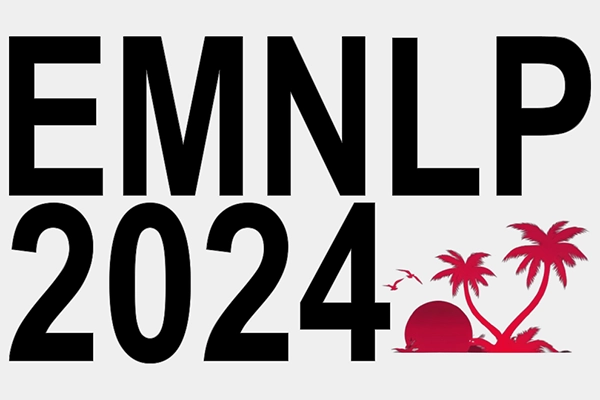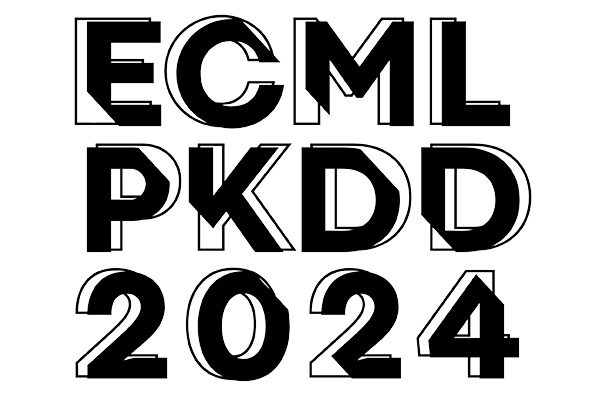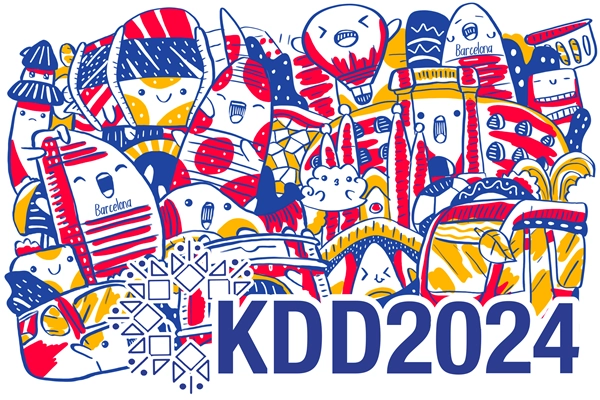
MCML researchers with 19 papers in highly-ranked Journals
We are happy to announce that MCML researchers are represented in 2022 with 19 papers in highly-ranked Journals:
Intensity Estimation on Geometric Networks with Penalized Splines.
Annals of Applied Statistics 16.2 (Jun. 2022). DOI.
Abstract
In the past decades the growing amount of network data lead to many novel statistical models. In this paper we consider so-called geometric networks. Typical examples are road networks or other infrastructure networks. Nevertheless, the neurons or the blood vessels in a human body can also be interpreted as a geometric network embedded in a three-dimensional space. A network-specific metric, rather than the Euclidean metric, is usually used in all these applications, making the analyses of network data challenging. We consider network-based point processes, and our task is to estimate the intensity (or density) of the process which allows us to detect high- and low-intensity regions of the underlying stochastic processes. Available routines that tackle this problem are commonly based on kernel smoothing methods. This paper uses penalized spline smoothing and extends this toward smooth intensity estimation on geometric networks. Furthermore, our approach easily allows incorporating covariates, enabling us to respect the network geometry in a regression model framework. Several data examples and a simulation study show that penalized spline-based intensity estimation on geometric networks is a numerically stable and efficient tool. Furthermore, it also allows estimating linear and smooth covariate effects, distinguishing our approach from already existing methodologies.
MCML Authors
Half-trek criterion for identifiability of latent variable models.
Annals of Statistics 50.6 (Dec. 2022). DOI.
Abstract
We consider linear structural equation models with latent variables and develop a criterion to certify whether the direct causal effects between the observable variables are identifiable based on the observed covariance matrix. Linear structural equation models assume that both observed and latent variables solve a linear equation system featuring stochastic noise terms. Each model corresponds to a directed graph whose edges represent the direct effects that appear as coefficients in the equation system. Prior research has developed a variety of methods to decide identifiability of direct effects in a latent projection framework, in which the confounding effects of the latent variables are represented by correlation among noise terms. This approach is effective when the confounding is sparse and effects only small subsets of the observed variables. In contrast, the new latent-factor half-trek criterion (LF-HTC) we develop in this paper operates on the original unprojected latent variable model and is able to certify identifiability in settings, where some latent variables may also have dense effects on many or even all of the observables. Our LF-HTC is an effective sufficient criterion for rational identifiability, under which the direct effects can be uniquely recovered as rational functions of the joint covariance matrix of the observed random variables. When restricting the search steps in LF-HTC to consider subsets of latent variables of bounded size, the criterion can be verified in time that is polynomial in the size of the graph.
MCML Authors
Avoiding C-hacking when evaluating survival distribution predictions with discrimination measures.
Bioinformatics 38.17 (Sep. 2022). DOI. GitHub.
Abstract
Motivation: In this article, we consider how to evaluate survival distribution predictions with measures of discrimination. This is non-trivial as discrimination measures are the most commonly used in survival analysis and yet there is no clear method to derive a risk prediction from a distribution prediction. We survey methods proposed in literature and software and consider their respective advantages and disadvantages.
Results: Whilst distributions are frequently evaluated by discrimination measures, we find that the method for doing so is rarely described in the literature and often leads to unfair comparisons or ‘C-hacking’. We demonstrate by example how simple it can be to manipulate results and use this to argue for better reporting guidelines and transparency in the literature. We recommend that machine learning survival analysis software implements clear transformations between distribution and risk predictions in order to allow more transparent and accessible model evaluation.
MCML Authors
EMT-Related Genes Have No Prognostic Relevance in Metastatic Colorectal Cancer as Opposed to Stage II/III: Analysis of the Randomised, Phase III Trial FIRE-3 (AIO KRK 0306; FIRE-3).
Cancers 14.22 (Nov. 2022). DOI.
Abstract
Despite huge advances in local and systemic therapies, the 5-year relative survival rate for patients with metastatic CRC is still low. To avoid over- or undertreatment, proper risk stratification with regard to treatment strategy is highly needed. As EMT (epithelial-mesenchymal transition) is a major step in metastatic spread, this study analysed the prognostic effect of EMT-related genes in stage IV colorectal cancer patients using the study cohort of the FIRE-3 trial, an open-label multi-centre randomised controlled phase III trial of stage IV colorectal cancer patients. Overall, the prognostic relevance of EMT-related genes seems stage-dependent. EMT-related genes have no prognostic relevance in stage IV CRC as opposed to stage II/III.
MCML Authors
Grouped Feature Importance and Combined Features Effect Plot.
Data Mining and Knowledge Discovery 36 (Jun. 2022). DOI.
Abstract
Interpretable machine learning has become a very active area of research due to the rising popularity of machine learning algorithms and their inherently challenging interpretability. Most work in this area has been focused on the interpretation of single features in a model. However, for researchers and practitioners, it is often equally important to quantify the importance or visualize the effect of feature groups. To address this research gap, we provide a comprehensive overview of how existing model-agnostic techniques can be defined for feature groups to assess the grouped feature importance, focusing on permutation-based, refitting, and Shapley-based methods. We also introduce an importance-based sequential procedure that identifies a stable and well-performing combination of features in the grouped feature space. Furthermore, we introduce the combined features effect plot, which is a technique to visualize the effect of a group of features based on a sparse, interpretable linear combination of features. We used simulation studies and real data examples to analyze, compare, and discuss these methods.
MCML Authors
A deep learning based classification of atmospheric circulation types over Europe: projection of future changes in a CMIP6 large ensemble.
Environmental Research Letters 17.8 (Jul. 2022). DOI.
Abstract
High- and low pressure systems of the large-scale atmospheric circulation in the mid-latitudes drive European weather and climate. Potential future changes in the occurrence of circulation types are highly relevant for society. Classifying the highly dynamic atmospheric circulation into discrete classes of circulation types helps to categorize the linkages between atmospheric forcing and surface conditions (e.g. extreme events). Previous studies have revealed a high internal variability of projected changes of circulation types. Dealing with this high internal variability requires the employment of a single-model initial-condition large ensemble (SMILE) and an automated classification method, which can be applied to large climate data sets. One of the most established classifications in Europe are the 29 subjective circulation types called Grosswetterlagen by Hess & Brezowsky (HB circulation types). We developed, in the first analysis of its kind, an automated version of this subjective classification using deep learning. Our classifier reaches an overall accuracy of 41.1% on the test sets of nested cross-validation. It outperforms the state-of-the-art automatization of the HB circulation types in 20 of the 29 classes. We apply the deep learning classifier to the SMHI-LENS, a SMILE of the Coupled Model Intercomparison Project phase 6, composed of 50 members of the EC-Earth3 model under the SSP37.0 scenario. For the analysis of future frequency changes of the 29 circulation types, we use the signal-to-noise ratio to discriminate the climate change signal from the noise of internal variability. Using a 5%-significance level, we find significant frequency changes in 69% of the circulation types when comparing the future (2071–2100) to a reference period (1991–2020).
MCML Authors
Critical appraisal of artificial intelligence-based prediction models for cardiovascular disease.
European Heart Journal 43.31 (Aug. 2022). DOI.
Abstract
The medical field has seen a rapid increase in the development of artificial intelligence (AI)-based prediction models. With the introduction of such AI-based prediction model tools and software in cardiovascular patient care, the cardiovascular researcher and healthcare professional are challenged to understand the opportunities as well as the limitations of the AI-based predictions. In this article, we present 12 critical questions for cardiovascular health professionals to ask when confronted with an AI-based prediction model. We aim to support medical professionals to distinguish the AI-based prediction models that can add value to patient care from the AI that does not.
MCML Authors
Automated Benchmark-Driven Design and Explanation of Hyperparameter Optimizers.
IEEE Transactions on Evolutionary Computation 26.6 (Oct. 2022). DOI.
Abstract
Automated hyperparameter optimization (HPO) has gained great popularity and is an important component of most automated machine learning frameworks. However, the process of designing HPO algorithms is still an unsystematic and manual process: new algorithms are often built on top of prior work, where limitations are identified and improvements are proposed. Even though this approach is guided by expert knowledge, it is still somewhat arbitrary. The process rarely allows for gaining a holistic understanding of which algorithmic components drive performance and carries the risk of overlooking good algorithmic design choices. We present a principled approach to automated benchmark-driven algorithm design applied to multifidelity HPO (MF-HPO). First, we formalize a rich space of MF-HPO candidates that includes, but is not limited to, common existing HPO algorithms and then present a configurable framework covering this space. To find the best candidate automatically and systematically, we follow a programming-by-optimization approach and search over the space of algorithm candidates via Bayesian optimization. We challenge whether the found design choices are necessary or could be replaced by more naive and simpler ones by performing an ablation analysis. We observe that using a relatively simple configuration (in some ways, simpler than established methods) performs very well as long as some critical configuration parameters are set to the right value.
MCML Authors
Bringing Light Into the Dark: A Large-scale Evaluation of Knowledge Graph Embedding Models under a Unified Framework.
IEEE Transactions on Pattern Analysis and Machine Intelligence 44.12 (Dec. 2022). DOI. GitHub.
Abstract
The heterogeneity in recently published knowledge graph embedding models’ implementations, training, and evaluation has made fair and thorough comparisons difficult. To assess the reproducibility of previously published results, we re-implemented and evaluated 21 models in the PyKEEN software package. In this paper, we outline which results could be reproduced with their reported hyper-parameters, which could only be reproduced with alternate hyper-parameters, and which could not be reproduced at all, as well as provide insight as to why this might be the case. We then performed a large-scale benchmarking on four datasets with several thousands of experiments and 24,804 GPU hours of computation time. We present insights gained as to best practices, best configurations for each model, and where improvements could be made over previously published best configurations. Our results highlight that the combination of model architecture, training approach, loss function, and the explicit modeling of inverse relations is crucial for a model’s performance and is not only determined by its architecture. We provide evidence that several architectures can obtain results competitive to the state of the art when configured carefully.
MCML Authors
Association of Non-Pharmaceutical Interventions to Reduce the Spread of SARS-CoV-2 With Anxiety and Depressive Symptoms: A Multi-National Study of 43 Countries.
International Journal of Public Health 67 (Mar. 2022). DOI.
Abstract
Objectives: To examine the association of non-pharmaceutical interventions (NPIs) with anxiety and depressive symptoms among adults and determine if these associations varied by gender and age.
Methods: We combined survey data from 16,177,184 adults from 43 countries who participated in the daily COVID-19 Trends and Impact Survey via Facebook with time-varying NPI data from the Oxford COVID-19 Government Response Tracker between 24 April 2020 and 20 December 2020. Using logistic regression models, we examined the association of [1] overall NPI stringency and [2] seven individual NPIs (school closures, workplace closures, cancellation of public events, restrictions on the size of gatherings, stay-at-home requirements, restrictions on internal movement, and international travel controls) with anxiety and depressive symptoms.
Results: More stringent implementation of NPIs was associated with a higher odds of anxiety and depressive symptoms, albeit with very small effect sizes. Individual NPIs had heterogeneous associations with anxiety and depressive symptoms by gender and age.
Conclusion: Governments worldwide should be prepared to address the possible mental health consequences of stringent NPI implementation with both universal and targeted interventions for vulnerable groups.
MCML Authors
A Survey of Methods for Automated Algorithm Configuration.
Journal of Artificial Intelligence Research 75 (Oct. 2022). DOI.
Abstract
Algorithm configuration (AC) is concerned with the automated search of the most suitable parameter configuration of a parametrized algorithm. There is currently a wide variety of AC problem variants and methods proposed in the literature. Existing reviews do not take into account all derivatives of the AC problem, nor do they offer a complete classification scheme. To this end, we introduce taxonomies to describe the AC problem and features of configuration methods, respectively. We review existing AC literature within the lens of our taxonomies, outline relevant design choices of configuration approaches, contrast methods and problem variants against each other, and describe the state of AC in industry. Finally, our review provides researchers and practitioners with a look at future research directions in the field of AC.
MCML Authors
Challenges in Interpreting Epidemiological Surveillance Data – Experiences from Germany.
Journal of Computational and Graphical Statistics 32.3 (Dec. 2022). DOI.
Abstract
As early as March 2020, the authors of this letter started to work on surveillance data to obtain a clearer picture of the pandemic’s dynamic. This letter outlines the lessons learned during this peculiar time, emphasizing the benefits that better data collection, management, and communication processes would bring to the table. We further want to promote nuanced data analyses as a vital element of general political discussion as opposed to drawing conclusions from raw data, which are often flawed in epidemiological surveillance data, and therefore underline the overall need for statistics to play a more central role in public discourse.
MCML Authors
On the Interplay of Regional Mobility, Social Connectedness, and the Spread of COVID-19 in Germany.
Journal of the Royal Statistical Society. Series A (Statistics in Society) 185.1 (Jan. 2022). DOI.
Abstract
Since the primary mode of respiratory virus transmission is person-to-person interaction, we are required to reconsider physical interaction patterns to mitigate the number of people infected with COVID-19. While research has shown that non-pharmaceutical interventions (NPI) had an evident impact on national mobility patterns, we investigate the relative regional mobility behaviour to assess the effect of human movement on the spread of COVID-19. In particular, we explore the impact of human mobility and social connectivity derived from Facebook activities on the weekly rate of new infections in Germany between 3 March and 22 June 2020. Our results confirm that reduced social activity lowers the infection rate, accounting for regional and temporal patterns. The extent of social distancing, quantified by the percentage of people staying put within a federal administrative district, has an overall negative effect on the incidence of infections. Additionally, our results show spatial infection patterns based on geographical as well as social distances.
MCML Authors
A downscaling approach to compare COVID-19 count data from databases aggregated at different spatial scales.
Journal of the Royal Statistical Society. Series A (Statistics in Society) 185.1 (Jan. 2022). DOI.
Abstract
As the COVID-19 pandemic continues to threaten various regions around the world, obtaining accurate and reliable COVID-19 data is crucial for governments and local communities aiming at rigorously assessing the extent and magnitude of the virus spread and deploying efficient interventions. Using data reported between January and February 2020 in China, we compared counts of COVID-19 from near-real-time spatially disaggregated data (city level) with fine-spatial scale predictions from a Bayesian downscaling regression model applied to a reference province-level data set. The results highlight discrepancies in the counts of coronavirus-infected cases at the district level and identify districts that may require further investigation.
MCML Authors
How to measure uncertainty in uncertainty sampling for active learning.
Machine Learning 111.1 (2022). DOI.
Abstract
Various strategies for active learning have been proposed in the machine learning literature. In uncertainty sampling, which is among the most popular approaches, the active learner sequentially queries the label of those instances for which its current prediction is maximally uncertain. The predictions as well as the measures used to quantify the degree of uncertainty, such as entropy, are traditionally of a probabilistic nature. Yet, alternative approaches to capturing uncertainty in machine learning, alongside with corresponding uncertainty measures, have been proposed in recent years. In particular, some of these measures seek to distinguish different sources and to separate different types of uncertainty, such as the reducible (epistemic) and the irreducible (aleatoric) part of the total uncertainty in a prediction. The goal of this paper is to elaborate on the usefulness of such measures for uncertainty sampling, and to compare their performance in active learning. To this end, we instantiate uncertainty sampling with different measures, analyze the properties of the sampling strategies thus obtained, and compare them in an experimental study.
MCML Authors
Mapping single-cell data to reference atlases by transfer learning.
Nature Biotechnology 40 (Aug. 2022). DOI.
Abstract
Large single-cell atlases are now routinely generated to serve as references for analysis of smaller-scale studies. Yet learning from reference data is complicated by batch effects between datasets, limited availability of computational resources and sharing restrictions on raw data. Here we introduce a deep learning strategy for mapping query datasets on top of a reference called single-cell architectural surgery (scArches). scArches uses transfer learning and parameter optimization to enable efficient, decentralized, iterative reference building and contextualization of new datasets with existing references without sharing raw data. Using examples from mouse brain, pancreas, immune and whole-organism atlases, we show that scArches preserves biological state information while removing batch effects, despite using four orders of magnitude fewer parameters than de novo integration. scArches generalizes to multimodal reference mapping, allowing imputation of missing modalities. Finally, scArches retains coronavirus disease 2019 (COVID-19) disease variation when mapping to a healthy reference, enabling the discovery of disease-specific cell states. scArches will facilitate collaborative projects by enabling iterative construction, updating, sharing and efficient use of reference atlases.
MCML Authors
CellRank for directed single-cell fate mapping.
Nature Methods 19.2 (Jan. 2022). DOI.
Abstract
Computational trajectory inference enables the reconstruction of cell state dynamics from single-cell RNA sequencing experiments. However, trajectory inference requires that the direction of a biological process is known, largely limiting its application to differentiating systems in normal development. Here, we present CellRank (https://cellrank.org) for single-cell fate mapping in diverse scenarios, including regeneration, reprogramming and disease, for which direction is unknown. Our approach combines the robustness of trajectory inference with directional information from RNA velocity, taking into account the gradual and stochastic nature of cellular fate decisions, as well as uncertainty in velocity vectors. On pancreas development data, CellRank automatically detects initial, intermediate and terminal populations, predicts fate potentials and visualizes continuous gene expression trends along individual lineages. Applied to lineage-traced cellular reprogramming data, predicted fate probabilities correctly recover reprogramming outcomes. CellRank also predicts a new dedifferentiation trajectory during postinjury lung regeneration, including previously unknown intermediate cell states, which we confirm experimentally.
MCML Authors
Stratiform and Convective Rain Classification Using Machine Learning Models and Micro Rain Radar.
Remote Sensing 14.18 (Sep. 2022). DOI.
Abstract
Rain type classification into convective and stratiform is an essential step required to improve quantitative precipitation estimations by remote sensing instruments. Previous studies with Micro Rain Radar (MRR) measurements and subjective rules have been performed to classify rain events. However, automating this process by using machine learning (ML) models provides the advantages of fast and reliable classification with the possibility to classify rain minute by minute. A total of 20,979 min of rain data measured by an MRR at Das in northeast Spain were used to build seven types of ML models for stratiform and convective rain type classification. The proposed classification models use a set of 22 parameters that summarize the reflectivity, the Doppler velocity, and the spectral width (SW) above and below the so-called separation level (SL). This level is defined as the level with the highest increase in Doppler velocity and corresponds with the bright band in stratiform rain. A pre-classification of the rain type for each minute based on the rain microstructure provided by the collocated disdrometer was performed. Our results indicate that complex ML models, particularly tree-based ensembles such as xgboost and random forest which capture the interactions of different features, perform better than simpler models. Applying methods from the field of interpretable ML, we identified reflectivity at the lowest layer and the average spectral width in the layers below SL as the most important features. High reflectivity and low SW values indicate a higher probability of convective rain.
MCML Authors
Combining Graph Neural Networks and Spatio-temporal Disease Models to Predict COVID-19 Cases in Germany.
Scientific Reports 12.3930 (Mar. 2022). DOI.
Abstract
During 2020, the infection rate of COVID-19 has been investigated by many scholars from different research fields. In this context, reliable and interpretable forecasts of disease incidents are a vital tool for policymakers to manage healthcare resources. In this context, several experts have called for the necessity to account for human mobility to explain the spread of COVID-19. Existing approaches often apply standard models of the respective research field, frequently restricting modeling possibilities. For instance, most statistical or epidemiological models cannot directly incorporate unstructured data sources, including relational data that may encode human mobility. In contrast, machine learning approaches may yield better predictions by exploiting these data structures yet lack intuitive interpretability as they are often categorized as black-box models. We propose a combination of both research directions and present a multimodal learning framework that amalgamates statistical regression and machine learning models for predicting local COVID-19 cases in Germany. Results and implications: the novel approach introduced enables the use of a richer collection of data types, including mobility flows and colocation probabilities, and yields the lowest mean squared error scores throughout the observational period in the reported benchmark study. The results corroborate that during most of the observational period more dispersed meeting patterns and a lower percentage of people staying put are associated with higher infection rates. Moreover, the analysis underpins the necessity of including mobility data and showcases the flexibility and interpretability of the proposed approach.
MCML Authors
01.01.2022
Related

06.11.2024
MCML researchers with 20 papers at EMNLP 2024
Conference on Empirical Methods in Natural Language Processing (EMNLP 2024). Miami, FL, USA, 12.11.2024 - 16.11.2024

01.10.2024
MCML researchers with 16 papers at MICCAI 2024
27th International Conference on Medical Image Computing and Computer Assisted Intervention (MICCAI 2024). Marrakesh, Morocco, 06.10.2024 - 10.10.2024

26.09.2024
MCML researchers with 18 papers at ECCV 2024
18th European Conference on Computer Vision (ECCV 2024). Milano, Italy, 29.09.2024 - 04.10.2024

10.09.2024
MCML at ECML-PKDD 2024
We are happy to announce that MCML researchers are represented at ECML-PKDD 2024.

20.08.2024
MCML researchers with two papers at KDD 2024
30th ACM SIGKDD International Conference on Knowledge Discovery and Data (KDD 2024). Barcelona, Spain, 25.08.2024 - 29.08.2024


















